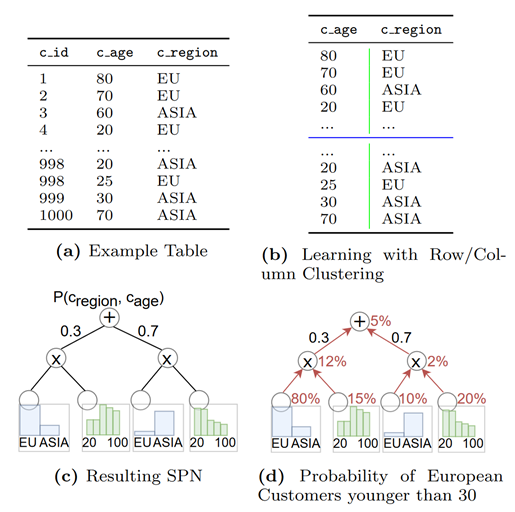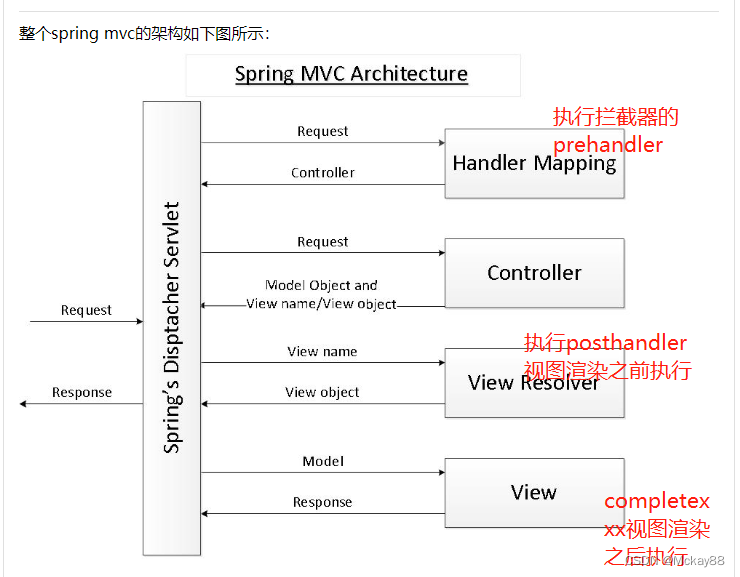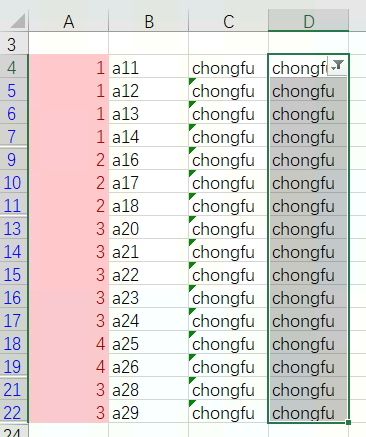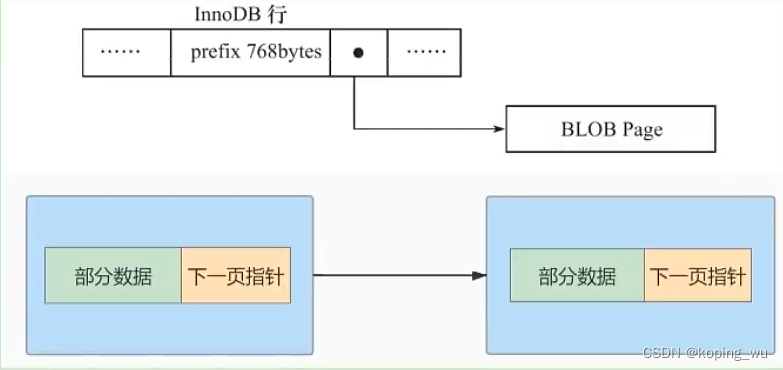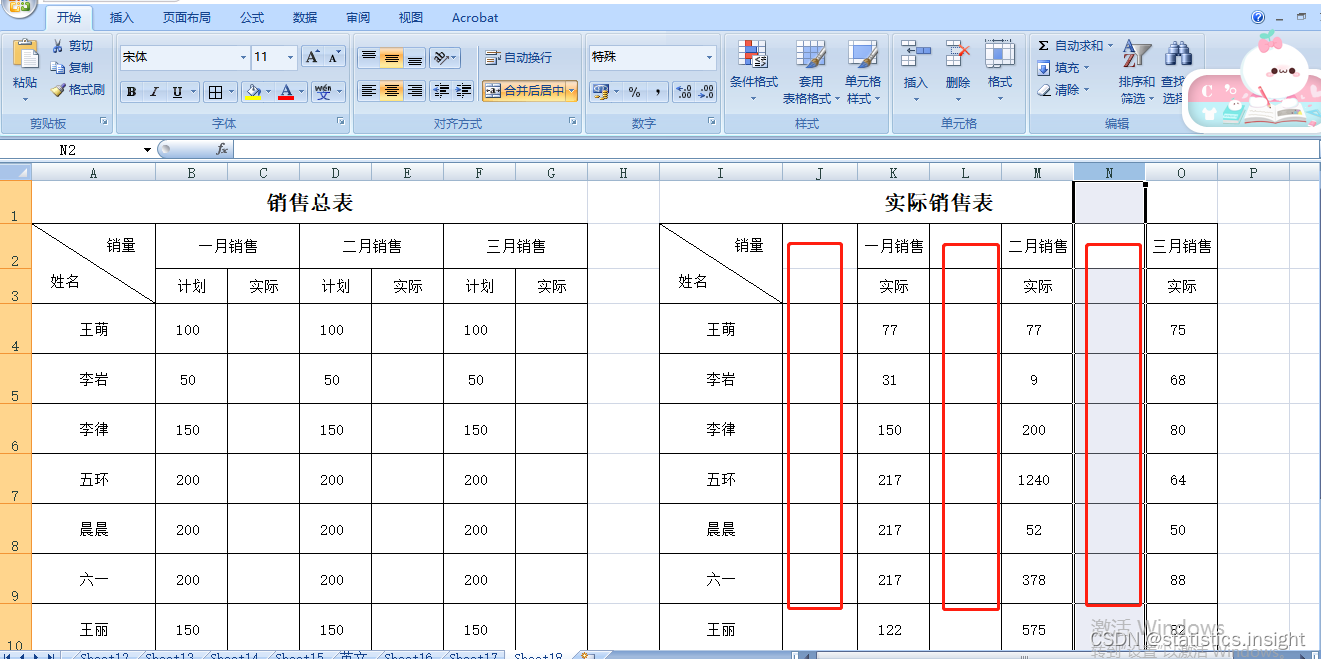当前位置:网站首页>Gstore weekly gstore source code analysis (4): black and white list configuration analysis of security mechanism
Gstore weekly gstore source code analysis (4): black and white list configuration analysis of security mechanism
2022-07-02 19:04:00 【PKUMOD】
In the previous chapter, we introduced the user rights management of the security mechanism , Next, we will analyze the source code of the black-and-white list configuration in the security mechanism .
1.1 brief introduction
stay gstore The black and white list in the security mechanism refers to access IP Blacklist database and whitelist database ; Blacklist rules are : In the blacklist library IP Will be denied access to , The white list rule is : Only allow... In the whitelist library IP visit ; In principle, the black-and-white list is configured as one of two , If both are enabled, the white list takes precedence .
1.2 Configure black and white lists
First, through gstore Root directory init.conf File : Start the blacklist or whitelist mode ; The default mode is blacklist , As shown in the following configuration file :
[ghttp]
......
# White list library file path , Blank means that... Is not enabled
ip_allow_path=""
# Blacklist library file path , Blank means that... Is not enabled
ip_deny_path="ipDeny.config"
......
Then, according to the configured mode , You can copy the corresponding black-and-white list library sample file for configuration , Configuration supports single IP And a certain range of IP Group , As shown below :
#ipDeny.config.example
#two kinds of ip format
#1. a single ip address
1.2.2.1
#2. a closed intervel represent by "-", to allow for a segment of ips or deny a segment of ips
1.1.1.1-1.1.1.2
###########################################################
# Notice!!!! #
# 1. use "#" to comment out a Whole line #
# 2. ip address write in one line #
# 3. do not include extra space or other char #
# 4. keep it only numbers or with one '-' #
# 5. to enable black list, use "--ipDeny=<filename>" #
###########################################################
1.3 Black and white list management
After configuring the black and white list , We can also dynamically configure through interfaces ,ghttp The network service provides an interface for querying and updating the black and white list .
When ghttp When the network service starts , The black and white list will be initialized , Read configuration file init.conf The configured black and white list library path , And read and parse the database data of the black and white list , Some key codes are as follows :
// Global parameters related to the black and white list
// Whether to enable blacklist
int blackList = 0;
// Whether to enable the white list
int whiteList = 0;
// White list library path
string ipBlackFile = "ipDeny.config";
// Blacklist library path
string ipWhiteFile = "ipAllow.config";
// White list Library
IPWhiteList* ipWhiteList;
// Blacklist database
IPBlackList* ipBlackList;
ghttp The function... Will be called when the server starts ghttp::initialize To initialize :
int initialize(int argc, char *argv[])
{
cout << "ghttp begin initialize..." << endl;
cout << "init param..." << endl;
Util util;
// Read init.conf Configuration parameters in the file
Util::configure_new();
......
else
{
......
ipWhiteFile = Util::getConfigureValue("ip_allow_path");
ipBlackFile = Util::getConfigureValue("ip_deny_path");
cout<<"ipWhiteFile:"<<ipWhiteFile<<endl;
cout<<"ipBlackFile:"<<ipBlackFile<<endl;
// Determine whether to configure the white list database
if (ipWhiteFile.empty()) {
whiteList = 0;
} else {
whiteList = 1;
}
// Determine whether to configure the blacklist library
if (ipBlackFile.empty()) {
blackList = 0;
} else {
blackList = 1;
}
......
}
// Determine the enabling rules of the black and white list , When both are enabled , White list first
if (whiteList) {
cout << "IP white List enabled." << endl;
ipWhiteList = new IPWhiteList();
ipWhiteList->Load(ipWhiteFile);
} else if (blackList) {
cout << "IP black list enabled." << endl;
ipBlackList = new IPBlackList();
ipBlackList->Load(ipBlackFile);
}
}
When initializing the library of the whitelist IPWhiteList::Init and IPWhiteList::Load Function to parse ( The blacklist database is similar ):
// IPWhiteList Parameters in ipList Used to hold IP library
std::set<std::string> ipList;
// IPWhiteList Constructors
IPWhiteList::IPWhiteList(){
this->Init();
}
// Initialize parameters ipList
void IPWhiteList::Init(){
ipList.erase(ipList.begin(), ipList.end());
}
// Documented IP library
void IPWhiteList::Load(std::string file){
this->Init();
this->ReadIPFromFile(file);
}
// analysis IP library
void IPWhiteList::ReadIPFromFile(std::string file){
ifstream infile(file.c_str());
string line;
if (!infile.is_open())
{
cout << "open white list file failed." << endl;
return;
}
while(getline(infile, line)) {
if (line.length() >= 7) {
int pos = line.find("#");
if(pos != -1)
continue;
this->ipList.insert(line);
}
}
infile.close();
}
After initialization , If you need to update the black and white list database data in real time , You can call api Interface to modify , Will call ghttp::IPManager_thread_new( explain : The enabling rule of the black and white list does not support dynamic switching , Only through init.conf Make changes , Need to restart after modification ghttp The service takes effect ), The code is as follows :
/**
* @brief IP manager
*
* @param response
* @param ips ip string
* @param ip_type 1-black ip 2-white ip
* @param type 1-query 2-save
*/
void IPManager_thread_new(const shared_ptr<HttpServer::Response>& response, string ips, string ip_type, string type) {
Document all;
Document::AllocatorType& allocator = all.GetAllocator();
all.SetObject();
// The query interface will return whether the currently effective rule is a white list or a blacklist , And the corresponding effective rules IP Library list
if ( type == "1") { // query
Document responseBody;
Document listDoc;
responseBody.SetObject();
listDoc.SetArray();
// During initialization, set the parameter change value by configuring the whitelist path
if (whiteList) // white IP
{
cout << "IP white List enabled." << endl;
responseBody.AddMember("ip_type", "2", allocator);
for (std::set<std::string>::iterator it = ipWhiteList->ipList.begin(); it!=ipWhiteList->ipList.end();it++)
{
Value item(kStringType);
item.SetString((*it).c_str(), allocator);
listDoc.PushBack(item, allocator);
}
}
// During initialization, set the parameter change value by configuring the blacklist path
// ( If the white list is in effect , The white list is preferred , Even if the blacklist library path is configured )
else if (blackList) // black IP
{
cout << "IP black List enabled." << endl;
responseBody.AddMember("ip_type", "1", allocator);
for (std::set<std::string>::iterator it = ipBlackList->ipList.begin(); it!=ipBlackList->ipList.end();it++)
{
Value item(kStringType);
item.SetString((*it).c_str(), allocator);
listDoc.PushBack(item, allocator);
}
}
......
responseBody.AddMember("ips", listDoc, allocator);
......
}
else if (type == "2") { // save
......
vector<string> ipVector;
Util::split(ips,",", ipVector);
if (ip_type == "1") { // black IP
// Update the blacklist library and reload
if (blackList) {
ipBlackList->UpdateIPToFile(ipBlackFile, ipVector, "update by wrokbanch");
// realod ip list
ipBlackList->Load(ipBlackFile);
}
......
}
else if (ip_type == "2") { // white IP
// Update the whitelist library and reload
if (whiteList) {
ipWhiteList->UpdateIPToFile(ipWhiteFile, ipVector, "update by wrokbanch");
// realod ip list
ipWhiteList->Load(ipWhiteFile);
}
......
}
......
}
}
When updating the black and white list library, it will call IPWhiteList::UpdateIPToFile and IPBlackList::UpdateIPToFile function , Update the latest configuration data to the file , Some of the code snippets are as follows :
/**
* @brief
*
* @param file
* @param ips
* @param reason
*/
void IPWhiteList::UpdateIPToFile(std::string file, vector<std::string>& ips, std::string reason)
{
ofstream outfile;
outfile.open(file.c_str());
if (!outfile)
{
cout << "open white list file failed." << endl;
return;
}
// Record the reason for each change
outfile << "#" << reason << "\n";
for(vector<std::string>::iterator it = ips.begin(); it != ips.end(); it++)
{
outfile << (*it) << "\n";
}
outfile.close();
}
1.4 Black and white list verification
Black and white list verification is generally enabled gstore Network services ( Such as ghttp service ) after , When the database is operated through an external interface , The client that initiated the request IP To verify , Whether the black and white list rules are met , Some of the code snippets are as follows :
// In the sub thread of request processing, the interface of the request will be IP verification
void request_thread(const shared_ptr<HttpServer::Response>& response,
const shared_ptr<HttpServer::Request>& request, string RequestType)
{
// verification IP Whether it complies with the access rules of the black and white list
if (!ipCheck(request)) {
string error = "IP Blocked!";
sendResponseMsg(1101, error, response,remote_ip,"ipCheck");
return;
}
......
}
In function ghttp::ipCheck in , The rules that will determine the effectiveness of the current black and white list , Then verify according to the effective rules , The code is as follows :
bool ghttp::ipCheck(const shared_ptr<HttpServer::Request>& request){
// Obtain requested IP Address
string remote_ip;
unordered_multimap<std::string, std::string, case_insensitive_hash, case_insensitive_equals> m=request->header;
string map_key = "X-Real-IP";
pair<std::unordered_multimap<std::string, std::string, case_insensitive_hash, case_insensitive_equals>::iterator,std::unordered_multimap<std::string, std::string, case_insensitive_hash, case_insensitive_equals>::iterator> lu = m.equal_range(map_key);
if(lu.first != lu.second)
remote_ip = lu.first->second;
else
remote_ip = request->remote_endpoint_address;
// Implement the white list rule
if(whiteList == 1) {
return ipWhiteList->Check(remote_ip);
}
// Execute the blacklist rules
else if(blackList == 1){
return ipBlackList->Check(remote_ip);
}
return true;
}
// White list rules match : Hit rule returns true, Otherwise return to false
bool IPWhiteList::Check(std::string ip){
if(this->ipList.empty())
return false;
else if(this->ipList.find(ip) != this->ipList.end())
return true;
for(std::set<string>::iterator it=this->ipList.begin(); it!=this->ipList.end(); ++it) {
// case for xxx.xxx.xxx.xxx-xxx.xxx.xxx.xxx
string test = *it;
if(test.find("-") != -1){
std::vector<std::string> fields;
std::vector<std::string> start;
std::vector<std::string> end;
std::vector<std::string> test_ip;
boost::split( fields, test, boost::is_any_of( "-" ) );
boost::split( start, fields[0], boost::is_any_of( "\\." ) );
boost::split( end, fields[1], boost::is_any_of( "\\." ) );
boost::split( test_ip, ip, boost::is_any_of( "\\." ) );
bool res = true;
for(int i = 0; i < 4; i++){
int s = std::stoi(start[i]);
int e = std::stoi(end[i]);
int candidate = std::stoi(test_ip[i]);
if(!(s <= candidate && candidate <= e)){
res = false;
break;
}
}
if(res)
return true;
}
}
return false;
}
// Blacklist rules match : Hit rule returns false, Otherwise return to true
bool IPBlackList::Check(std::string ip){
if(this->ipList.empty())
return true;
else if(this->ipList.find(ip) != this->ipList.end())
return false;
for(std::set<string>::iterator it=this->ipList.begin(); it!=this->ipList.end(); ++it){
// case for xxx.xxx.xxx.xxx-xxx.xxx.xxx.xxx
string test = *it;
if(test.find("-") != -1){
std::vector<std::string> fields;
std::vector<std::string> start;
std::vector<std::string> end;
std::vector<std::string> test_ip;
boost::split( fields, test, boost::is_any_of( "-" ) );
boost::split( start, fields[0], boost::is_any_of( "\\." ) );
boost::split( end, fields[1], boost::is_any_of( "\\." ) );
boost::split( test_ip, ip, boost::is_any_of( "\\." ) );
bool res = false;
for(int i = 0; i < 4; i++){
int s = std::stoi(start[i]);
int e = std::stoi(end[i]);
int candidate = std::stoi(test_ip[i]);
if(!(s <= candidate && candidate <= e)){
res = true;
break;
}
}
if(!res)
return false;
}
}
return true;
}
1.6 Summary
This chapter introduces the black and white list module of the security mechanism , Analyzed how to configure the black and white list 、 How to manage black and white lists and how to use black and white list rules to verify requests , It is suggested to combine the source code while reading Main/ghttp.cpp、Util/IPWhiteList.cpp、Util/IPBlackList.cpp Analyze it together , It will be easier to understand . The next chapter will analyze gstore Log tracing module in security mechanism .
边栏推荐
猜你喜欢
随机推荐
Progress-进度条
R language ggplot2 visualization: visualize the line chart and add customized X-axis label information to the line chart using labs function
全链路数字化转型下,零售企业如何打开第二增长曲线
options should NOT have additional properties
R语言dplyr包filter函数筛选dataframe数据、如果需要筛选的数据列(变量)名称中包含引号则需要使用!!sym语法处理、否则因为无法处理引号筛选不到任何数据
Looking for innocence in New York -- a beautiful day at the discovery center of Legoland, New Jersey
论文导读 | 机器学习在数据库基数估计中的应用
STM32G0 USB DFU 升级校验出错-2
Google's official response: we have not given up tensorflow and will develop side by side with Jax in the future
Deep learning mathematics foundation
在Tensorflow2中使用mnist_784数据集进行手写数字识别
【每日一题】第二天
Deep neural network Summary
R language uses Cox of epidisplay package Display function obtains the summary statistical information of Cox regression model (risk rate HR, adjusted risk rate and its confidence interval, P value of
Thoroughly understand the point cloud processing tutorial based on open3d!
R language ggplot2 visual Facet: gganimate package is based on Transition_ Time function to create dynamic scatter animation (GIF)
Distance measurement - Jaccard distance
Golang并发编程——goroutine、channel、sync
论文导读 | 关于将预训练语言模型作为知识库的分析与批评
R语言ggplot2可视化:gganimate包创建动态柱状图动画(gif)、使用transition_states函数在动画中沿给定维度逐步显示柱状图
